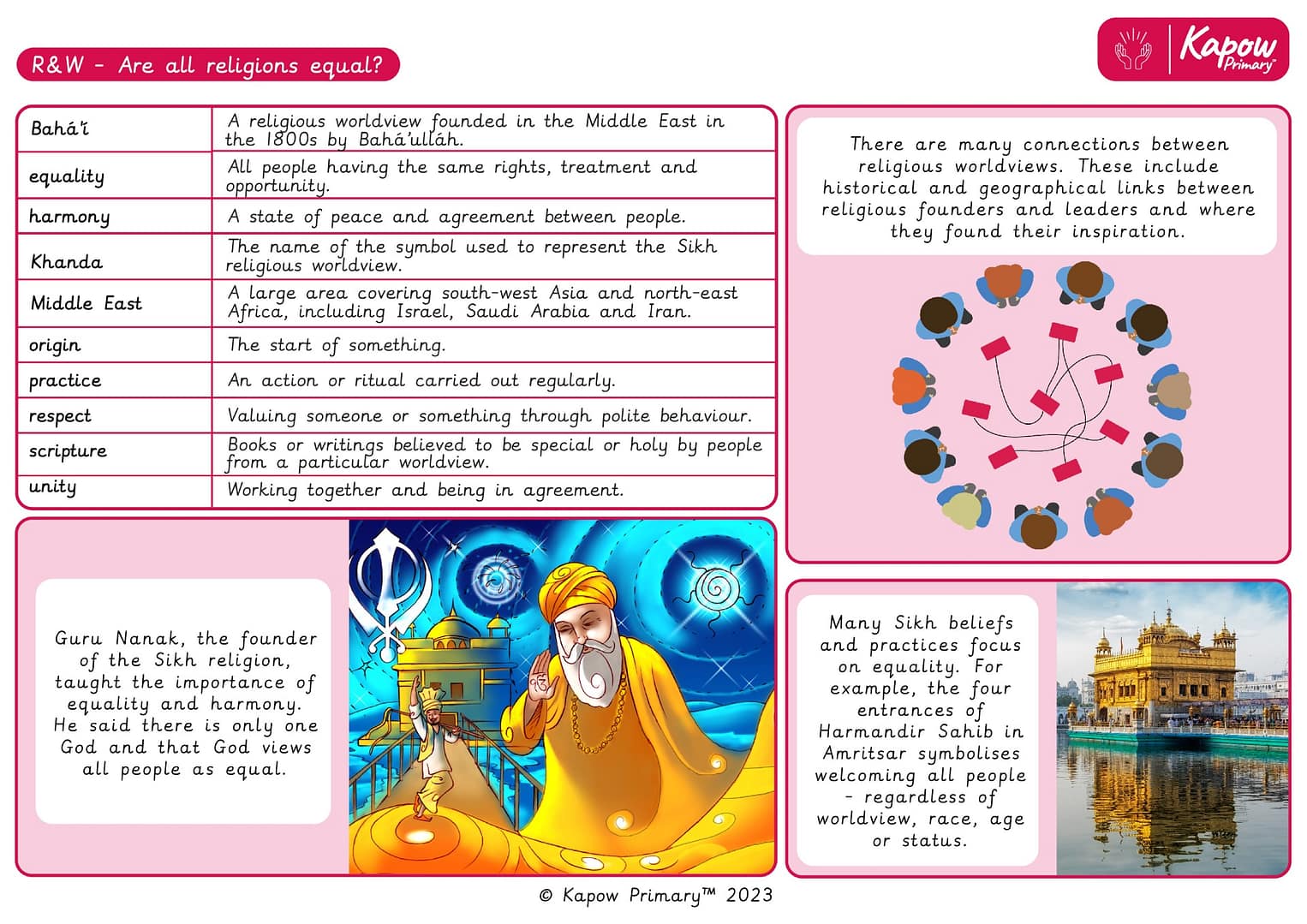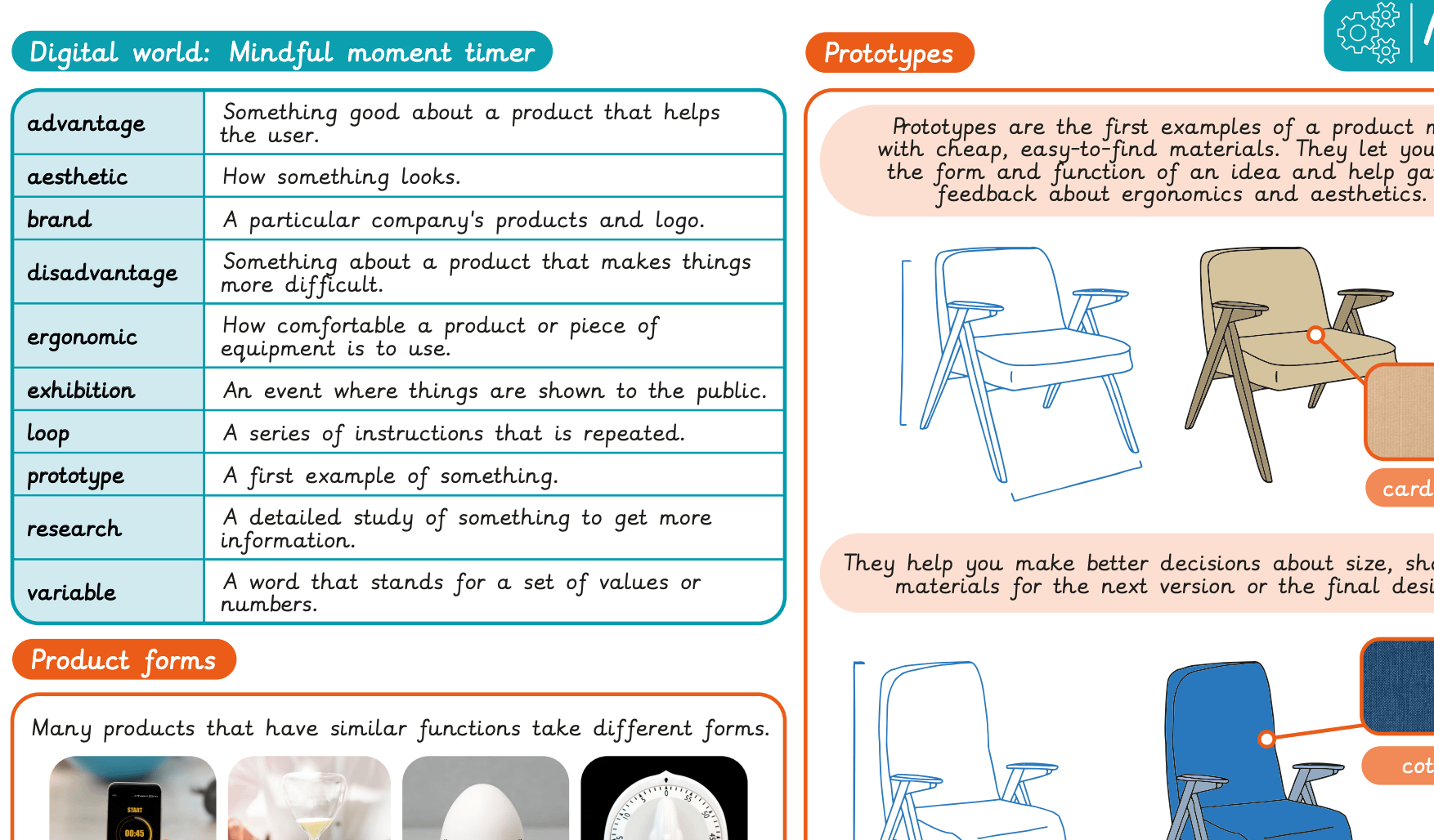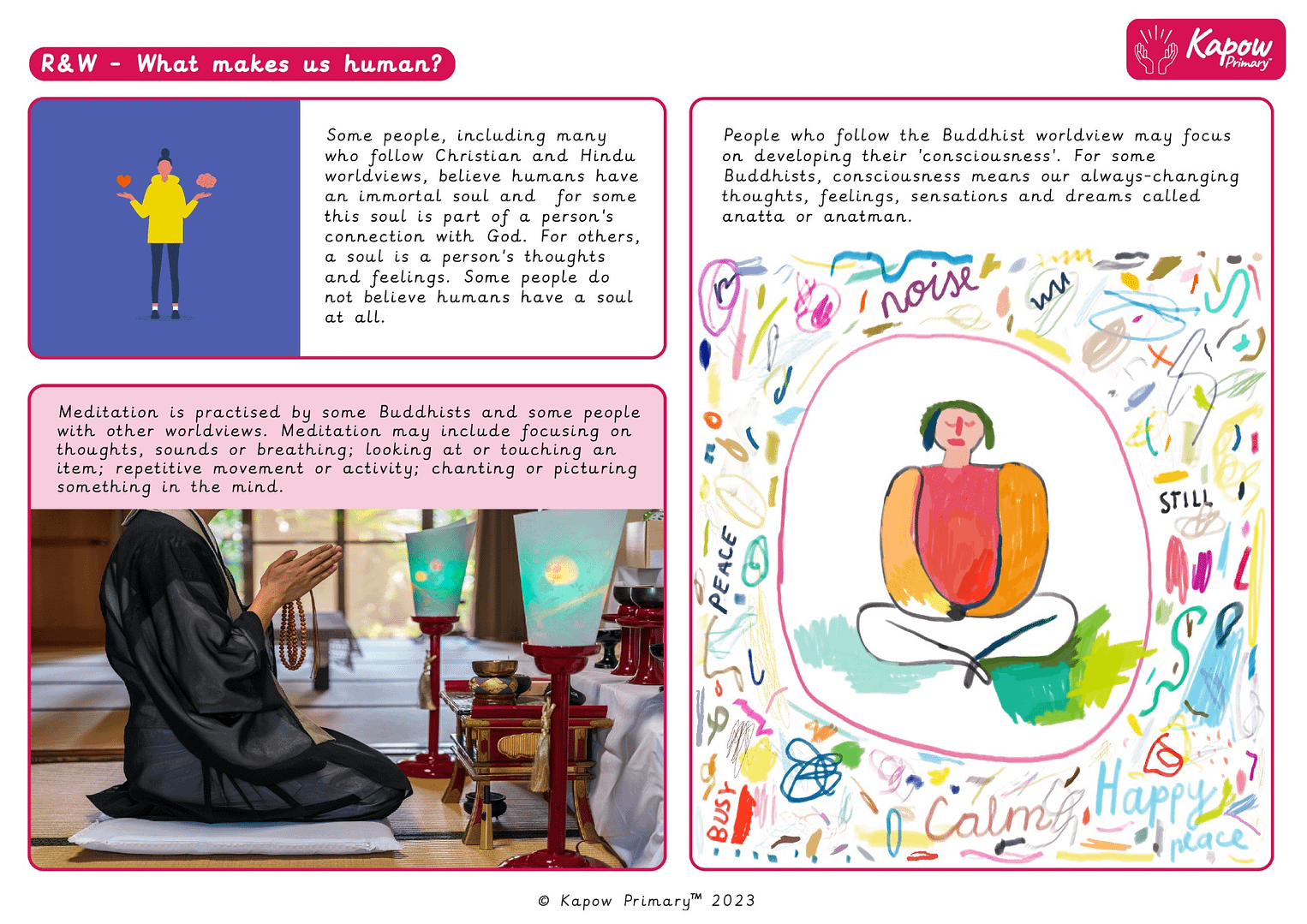
A Knowledge organiser that captures the essential knowledge and skills learnt throughout the unit Religion and Worldviews, Year 3/4, What Makes Us Human?
This Religion and Worldviews resource is designed to support the pupils as they explore different perspectives on what it means to be human. It introduces key vocabulary such as identity, soul, morality, compassion, and beliefs, helping the pupils understand how religious and philosophical traditions define human nature. The pupils will also learn about different worldviews on human purpose, emotions, and the qualities that shape individual and collective identities.
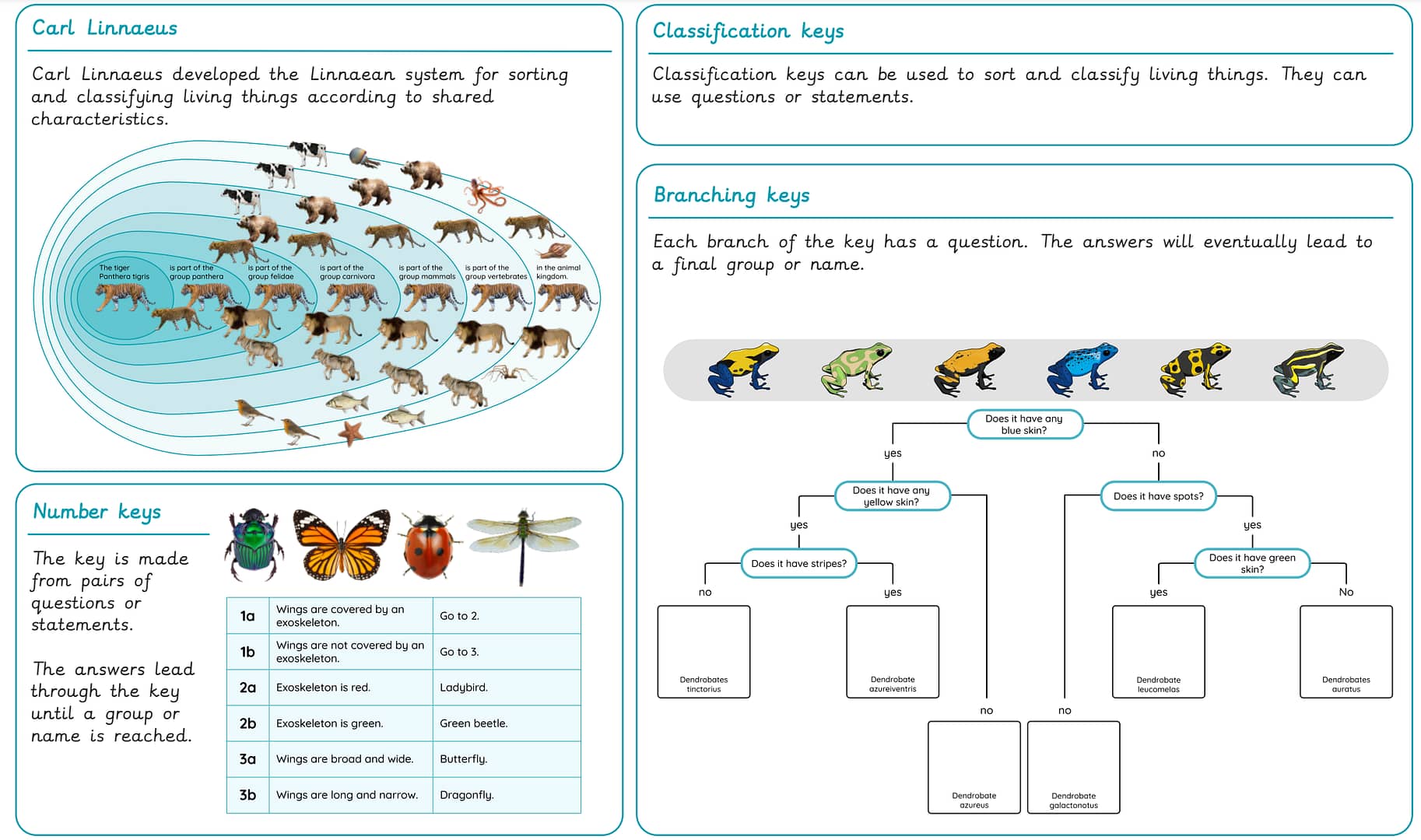
A Knowledge organiser that captures the essential knowledge and skills learnt throughout the unit Science, Year 6, Living things: Classifying big and small.
This resource is designed to support the children as they explore the classification of living things. It highlights key vocabulary and concepts, including vertebrates, invertebrates, plants and microorganisms, and how they are grouped by shared characteristics. The resource introduces classification keys, such as branching and number keys and explains the contributions of Carl Linnaeus to scientific classification. It is perfect for consolidating essential knowledge and fostering an understanding of how scientists sort and organise the diversity of life.
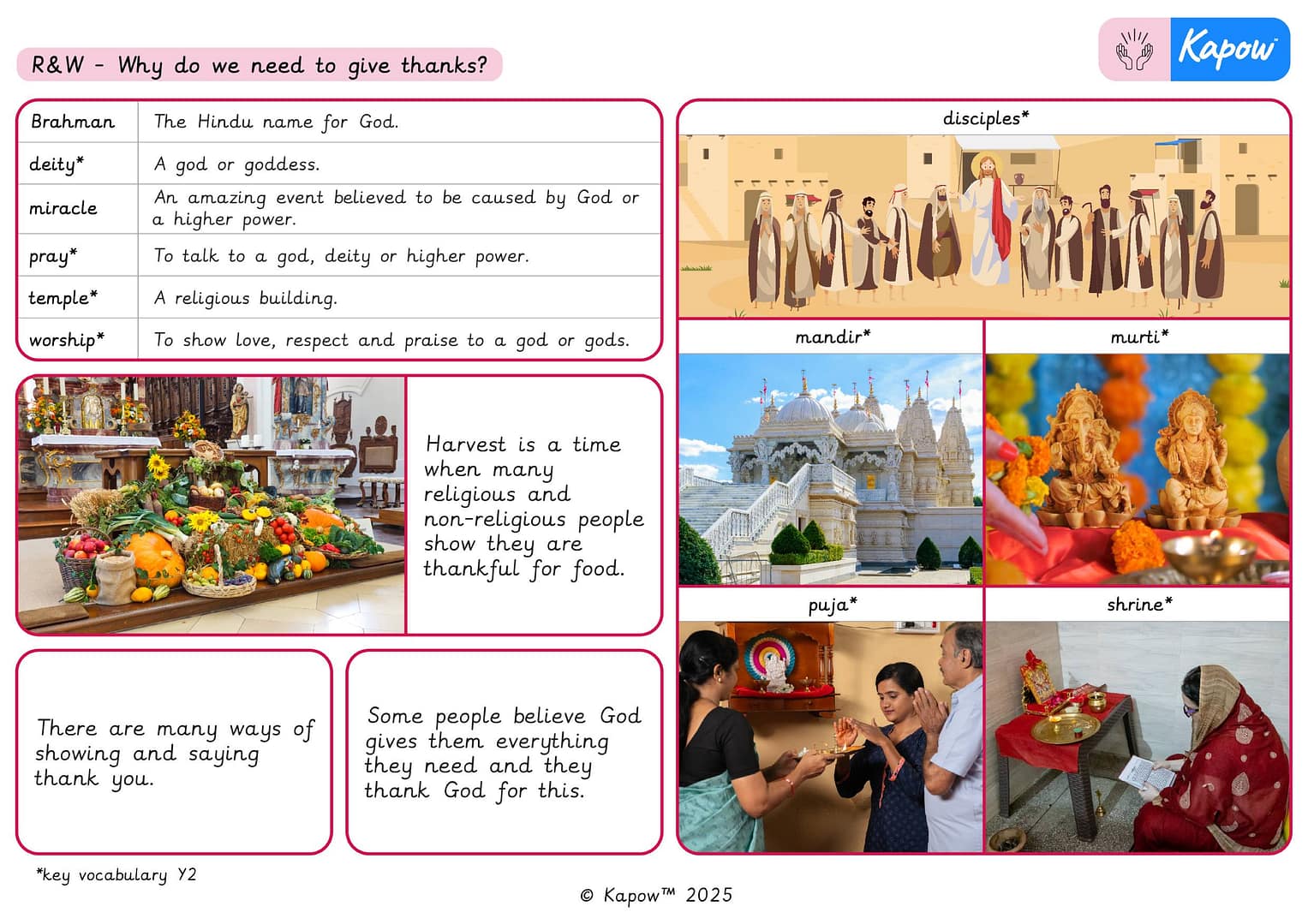
A Knowledge Organiser that captures the essential knowledge and skills learnt throughout the unit Religion and Worldviews, Year 2, Why do we need to give thanks?
This resource is designed to help pupils understand how gratitude is expressed across religious and non-religious communities. It introduces key vocabulary such as Brahman, deity, miracle, temple, and worship, supported by images of Hindu practices like puja, mandir, and murti worship, as well as Christian traditions involving Jesus and his disciples. Through the context of harvest and daily gratitude, pupils explore how people give thanks in different ways and why this practice is important. This resource reinforces respectful understanding of beliefs and supports vocabulary acquisition through visual and written prompts.
A Knowledge Organiser that captures the essential knowledge and skills learnt throughout the unit Spanish, Year 4, Dates in Spanish.
This resource is designed to support pupils as they learn how to express dates and months in Spanish. It introduces key vocabulary for numbers from 1 to 31 and all twelve months of the year, with clear English translations and visual cues to aid memorisation. Pupils practise asking and answering questions about the date, birthdays, and key events, while gaining cultural insight into traditions such as Saint John’s Day. This unit is ideal for embedding number and calendar vocabulary and building conversational fluency in Spanish.
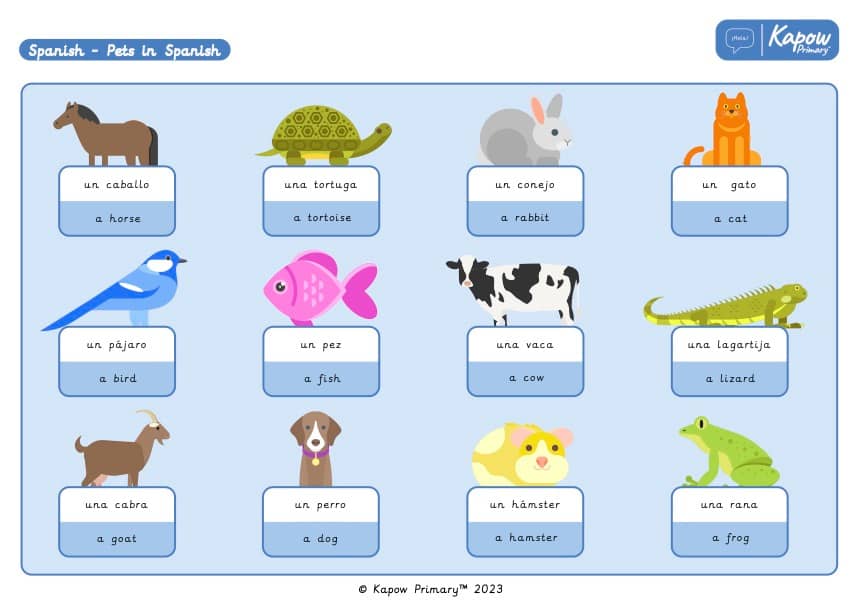
A Knowledge organiser that captures the essential knowledge and skills learnt throughout the unit Spanish, Year 4, Pets in Spanish.
This Spanish resource is designed to support the pupils as they learn vocabulary and phrases related to pets. It introduces key vocabulary such as animal names, adjectives, colours, and phrases for describing pets, helping the pupils develop their Spanish-speaking, listening, and reading skills. The pupils will also learn how to ask and answer questions about pets, including their characteristics and preferences.
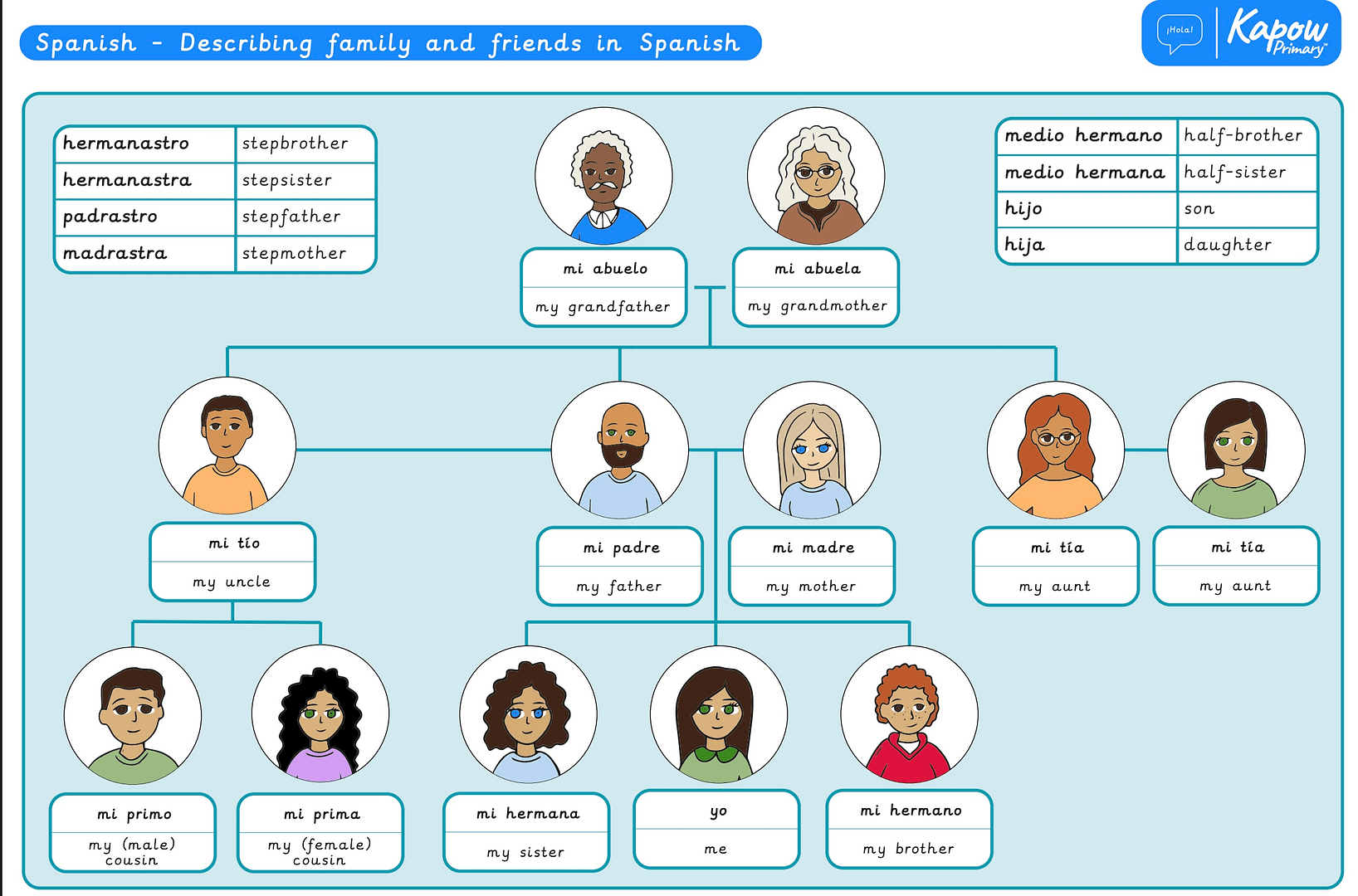
A Knowledge Organiser that captures the essential knowledge and skills learnt throughout the unit Spanish, Year 5, Describing friends and family.
This resource is designed to support pupils as they learn to describe family members and relationships in Spanish. It introduces key vocabulary for family roles (such as hermano, abuela, and primo) and extends understanding with terms for step- and half-relatives. Through illustrated family trees, pupils explore sentence structures used to describe people and relationships, including how to express sibling information and identify others using the question ¿Quién es? (Who is it?). The document also reinforces verb conjugations and subject pronouns in the present tense, helping pupils construct accurate sentences using me llamo, tengo, and vive. It provides an engaging foundation for confidently discussing personal relationships in Spanish.

